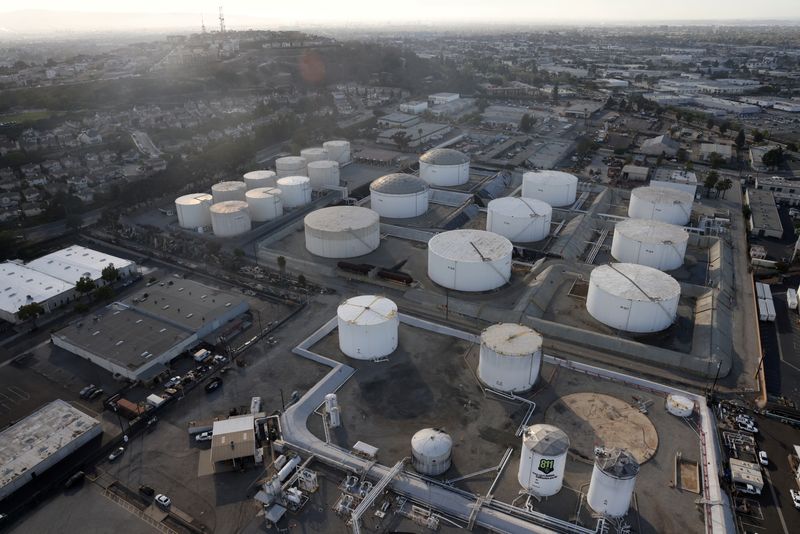By Laura Sanicola
(Reuters) -Oil futures prices dropped toward $73 a barrel on Tuesday after the International Energy Agency (IEA) said the Omicron coronavirus variant is set to dent global demand recovery.
U.S. data showing producer prices at 11-year highs reinforced market expectations of faster stimulus tapering by the Federal Reserve, which meets this week. This supported the dollar and weighed on oil, which typically move inversely.
Brent crude futures fell 69 cents, or 0.9%, to $73.70. U.S. West Texas Intermediate (WTI) crude futures settled down 56 cents, or 0.8%, at $70.73.
The U.S. dollar stayed near one-week highs on Tuesday versus a basket of major currencies, bolstered by the producer prices data.
"As some accelerated tapering out of the Fed becomes more likely, US interest rates are apt to lift in pushing additional strength into the dollar in forcing price weakness into the oil," said Jim Ritterbusch, president of Ritterbusch and Associates LLC in Galena, Illinois.
On Tuesday, the World Health Organization said the Omicron variant was spreading at an "unprecedented" rate, prompting markets to edge lower.
"The surge in new COVID-19 cases is expected to temporarily slow, but not upend, the recovery in oil demand that is under way," the Paris-based IEA said in its monthly oil report.[IEA/S]
Governments around the world, including most recently Britain and Norway, have tightened restrictions to stop the spread of the Omicron variant.
The IEA lowered its forecast for oil demand this year and the next by 100,000 barrels per day (bpd) each, mostly because of the expected blow to jet fuel use from new travel curbs.
"The skies are darkening for the oversupply outlook again," said John Kilduff, partner at Again Capital LLC in New York.
The Asian Development Bank on Tuesday trimmed its growth forecasts for developing Asia for this year and next to reflect risks and uncertainty brought on by the variant, which could also hamper oil demand.
On Monday, the Organization of the Petroleum Exporting Countries (OPEC) raised its world oil demand forecast for the first quarter of 2022 and stuck to its timeline for a return to pre-pandemic levels of oil use, saying the Omicron variant's impact would be mild and brief.

OPEC+, which includes OPEC and other producers including Russia, plan to boost supply every month by 400,000 barrels per day (bpd) after sharply cutting output last year.
Output in the largest U.S. shale basin is expected to surge to a record in January, according to a forecast from the U.S. Energy Information Administration.